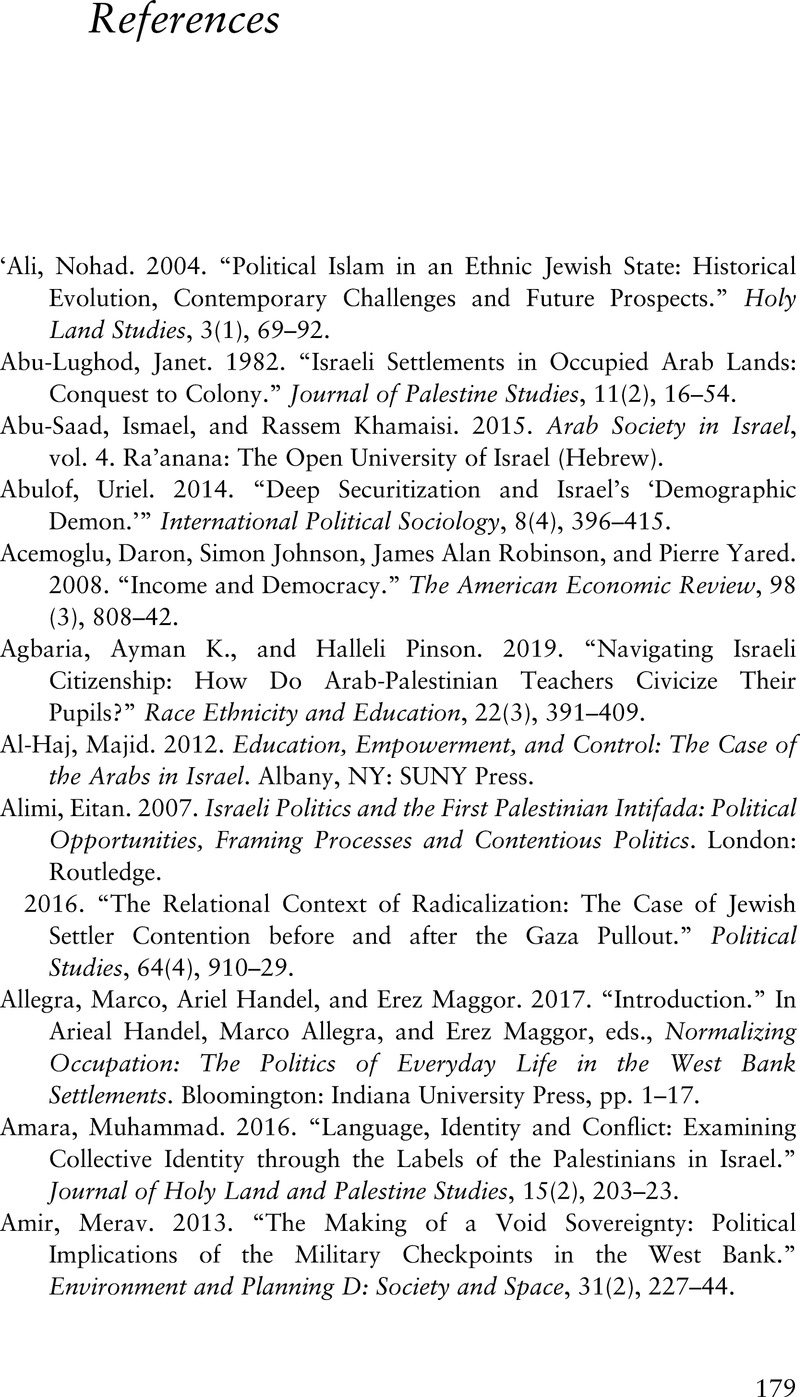Book contents
- Israel’s Regime Untangled
- Israel’s Regime Untangled
- Copyright page
- Contents
- Figures
- Maps
- Tables
- Acknowledgments
- Introduction
- 1 How the Israeli Regime Is Classified?
- 2 Circumventing the Challenges in the Classification of Israel (A)
- 3 Circumventing the Challenges in the Classification of Israel (B)
- 4 Democraticness of the Israeli Regime
- 5 The Conflict and the Israeli Regime
- 6 State Capacity
- Conclusions
- References
- Index
- References
References
Published online by Cambridge University Press: 10 March 2021
- Israel’s Regime Untangled
- Israel’s Regime Untangled
- Copyright page
- Contents
- Figures
- Maps
- Tables
- Acknowledgments
- Introduction
- 1 How the Israeli Regime Is Classified?
- 2 Circumventing the Challenges in the Classification of Israel (A)
- 3 Circumventing the Challenges in the Classification of Israel (B)
- 4 Democraticness of the Israeli Regime
- 5 The Conflict and the Israeli Regime
- 6 State Capacity
- Conclusions
- References
- Index
- References
Summary

- Type
- Chapter
- Information
- Israel's Regime UntangledBetween Democracy and Apartheid, pp. 179 - 199Publisher: Cambridge University PressPrint publication year: 2021



